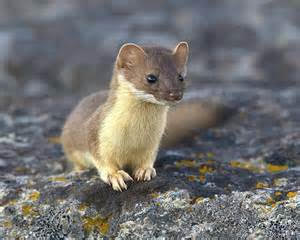They are seldom seen furbearers that roam Kentucky’s woods, fields and riverine environments.
The American Mink and Long-tailed Weasel are most active in low light, when they are on the hunt. They are taken by trappers, but only occasionally seen by stream fishermen, hunters, hikers and persons just quietly observing or photographing nature.
These aggressive, furry carnivores are the very essence of being small, but having a big attitude.
Here’s some interesting life history facts:
— The American mink (Neovison vison) is a semiaquatic species in Family Mustelidae. Native to North America, the mink is found throughout most of Alaska, Canada and the Lower 48 states, but absent from the arid Southwest.
— The only extant (still in existence) member of genus Neovison, the American mink feeds on rodents, fish, crustaceans, frogs, and birds.

— They are primarily nocturnal.
— Minks have an overall length of typically 20 to 27 inches long, with a stout build, and a tail that’s about one-third its body length. Its body shape resembles a marten, a closely related species native to northern forests.
— Coloration varies seasonally.
— In winter, the mink’s fur is luxuriant — dense, long and soft — very dark blackish-tawny to light-tawny. Guard hairs are bright and dark-tawny, often approaching black on the spine. The underfur on the back is very wavy and grayish-tawny with a bluish tint. The tail is darker and sometimes becomes pure black on the tip. The thick underfur and oily guard hairs render the coat water-resistant.
— Its chin and lower lip are white.
— The summer fur is generally shorter, sparser and duller than the winter fur.
In Kentucky, mink are found along large rivers to smaller streams with year-round flowing water. They spend much of their time along shorelines, denning under the roots of trees, in undercut banks or the base of hollow trees. They sometimes take over a muskrat lodge, after killing the occupant.
On land, the mink moves with a bounding gait, with speeds up to four miles per hours. Mink sometimes climb trees, but are more at home in water.
They are good swimmers, moving through the water in an undulating motion, and can dive as deep as 10 feet, staying underwater for 20 to 30 seconds. When underwater, their heart rate lowers to conserve oxygen.

The American mink relies heavily on sight when foraging. They have good hearing, but their sense of smell is not as good as many other mammals.
Vocalizations include shrieks and hisses, muffled chuckling sounds when mating, and growls and snarls when confronting a threat. During aggressive encounters, the mink asserts its dominance by arching its back, puffing up, and lashing its tail, stamping and scraping the ground with its feet, and opening its mouth in a threatening gape.
Matting occurs in late winter to early spring, but the embryo does not immediately implant in the uterus.
This delayed implantation strategy ensures that young are born under conditions favorable to survival, including available food and mild weather conditions. Litters consist for four kits on average. Their eyes open after 25 days. Kits are dependent on their mother’s milk for about five weeks, but they begin hunting after eight weeks of age. They stay close to their mothers until the fall.
Sexual maturity is attained during the kit’s first spring, when they are about 10 months old.
The Long-Tailed Weasel (Mustela frenata) is a fearless and aggressive hunter that often preys on animals larger than itself.
An obligate carnivore that depends on the nutrients found only in animal flesh, this fierce predator does not consume plant material. It prefers its prey to be alive, devouring mice, squirrels, chipmunks, shrews, moles and rabbits. It’s prey is dispatched with a swift bite to the neck.
Occasionally, the weasel may eat small birds, bird eggs, reptiles, amphibians, fish, earthworms and some insects.
Some nuisance weasels attack and kill hens in chicken coops.
This slender mammal may be 13 to 17 inches in total length, with short legs and a well-furred tail that’s about half its body length. The weasel’s head is small and flattened, with ears that are short and rounded. The eyes are small and beady.
The Long-Tailed Weasel is found throughout most of the U.S. and Mexico, and portions of southwest Canada. Coloration varies seasonally, but is generally tan to brown, with a yellowish/white chin, neck, belly and feet. It’s tail has a black tip.
For more outdoors news and information, see Art Lander’s Outdoors on KyForward.
Weasels prefer woodlands, thickets, and brushy fencerows. They are often found around old homesites, living around rock foundations of farmhouses, sheds or root cellars. Like the mink, the weasel has well-developed scent glands, which are used to mark their territory and discourage predators.
The weasel does not dig its own burrow. They just find a chipmunk or rodent hole, and get a free meal and living quarters.
Weasels hunt day and night, but are more active in low light, or at night. They are preyed upon by larger mammals, owls, and snakes.
The Long-Tailed Weasel mates in July through August, but amazingly, the implantation of the fertilized egg on the uterine wall is delayed until the following March. Thus the gestation period lasts about 10 months, with actual embryonic development taking place only during the last four weeks. Delayed implantation ensures that the timing of the births will be during a period when small mammals are abundant.
Litter size generally is five to eight kits, born partially naked, blind and weighing less than an ounce. The growth rate of the young is rapid. In just three weeks, the kits are well furred, can crawl outside the nest and eat meat.
At five weeks of age, the kit’s eyes open, and they become physically active and vocal. Soon they emerge from their nest and accompany their mother on hunting trips.
Weasel kits are fully grown by autumn and, the family disbands. Females are able to breed at three to four months of age, while males become sexually mature at 15 to 18 months.
Minks and weasels are seldom seen furbearers found throughout Kentucky. These fearless little hunters are living proof that physical stature is not as important as attitude and determination.
Art Lander Jr. is outdoors editor for NKyTribune and KyForward. He is a native Kentuckian, a graduate of Western Kentucky University and a life-long hunter, angler, gardener and nature enthusiast. He has worked as a newspaper columnist, magazine journalist and author and is a former staff writer for Kentucky Afield Magazine, editor of the annual Kentucky Hunting & Trapping Guide and Kentucky Spring Hunting Guide, and co-writer of the Kentucky Afield Outdoors newspaper column.






















Have a chicken coop out from my house that also has a small creek running by it. Yesterday morning when going out to check them there was a mink on the creek bank looking at my hens. When he seen me he froze for a few seconds then jumped back into the water.
I have a creek behind my home. This morning, just as the sky was beginning to lighten up, I saw a group of 5 crossing the yard and heading for the hollow tree at the water’s edge. Very dark (black) in color – probably around 12 inches long…moving one at a time very swiftly across the grass. So exciting as I haven’t seen them in a few years now.
Saw one mid-afternoon while deer hunting in Taylor County a few weeks ago. Have seen a pair of Bobcats at same location and oddly enough it was mid-day as well.
I saw one in Otter Creek in Vine Grove. He was playing along the stream, looked up, stared a second, then took off for the undergrowth. Amazing!
Just saw one on my drive here in Paducah, KY 42003 when I stepped out at 3 am. It froze in place for a second looked up at me & ran off. Incredible sight. So skinny & long all black.
I am interested in getting a mink as a pet and hunter. Who has any for sale in the state of Eastern Kentucky, 41144
Fairly certain I saw an American mink in Goose Creek at the ET Sawyer Park today